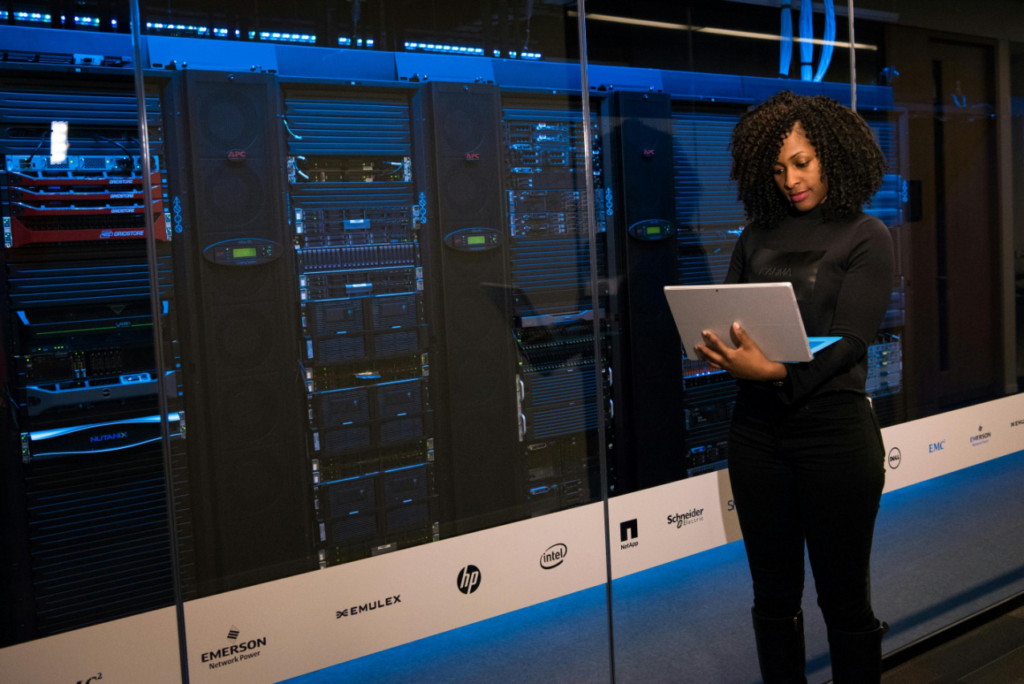In a world where cyberattacks occur every 39 seconds, the need for faster, more accurate defense systems has never been more critical. Imagine relying on a security system that not only alerts us to potential threats but also learns from every new attack it encounters. That’s exactly what AI-powered cybersecurity offers—an approach that continuously improves and adapts to stay a step ahead of increasingly sophisticated cyber threats.
With an evolving digital landscape, AI is rapidly becoming the backbone of modern cybersecurity. From detecting breaches at record speed to distinguishing legitimate activity from potential threats, AI-powered cybersecurity provides essential protection that traditional methods struggle to keep up with. As we take a closer look at how AI is reshaping the cybersecurity world, we’ll see why it’s more than just a tool—it’s the next frontier in keeping our systems secure.
At AI Report Central, we provide the latest cybersecurity news and insights, empowering businesses to harness AI-powered cybersecurity for enhanced protection against evolving threats.
This article covers AI’s critical role in modern cybersecurity, its benefits, and the latest applications that are transforming how we protect our digital assets.
Why AI Matters in Today’s Cybersecurity Landscape
Cyberattacks are no longer isolated incidents targeting only large corporations. Today, businesses of all sizes and industries find themselves under increasing threat from malicious actors. The complexity of these attacks has also increased, with malware, ransomware, phishing, and social engineering tactics becoming more elaborate.
Traditional security measures, like firewalls and manual threat analysis, struggle to keep up, as these methods are time-intensive and can’t scale as easily with the fast-growing rate of attacks.
AI steps in as a powerful solution by analyzing enormous volumes of data and identifying threats in real-time. Let’s look at how AI specifically addresses cybersecurity challenges:
- Speed and Efficiency: AI-powered cybersecuritytools process large datasets at lightning speed, identifying anomalies and warning signs before they escalate.
- Pattern Recognition: AI detects patterns that may indicate an attack is unfolding, even if the methods are entirely new or unusual.
- Adaptability: AI can learn from new attacks, evolving its defenses based on previous data without human input, making it a responsive line of defense.
With these strengths, AI doesn’t just supplement human-driven security efforts; it creates a dynamic shield that adapts in real-time, addressing threats as they emerge.
How AI Detects Threats Faster than Traditional Methods

One of AI’s biggest advantages in cybersecurity is its ability to analyze patterns and data continuously and immediately flag anything out of the ordinary. Traditional methods rely heavily on known threats and rule-based systems that often overlook new and creative attack methods. AI-powered cybersecurity, however, uses a combination of machine learning (ML) and deep learning to go beyond rule-based systems. It excels in identifying behavior-based threats by scanning for any signs of suspicious activity, such as:
- Unusual Login Patterns: AI algorithms can detect irregular login attempts or locations, flagging potential breaches before significant damage is done.
- Abnormal Data Movement: By tracking the flow of sensitive information, AI spots any abnormal data transfers that could signal an exfiltration attempt.
- Behavioral Anomalies: If an employee’s account suddenly starts accessing confidential information or downloading large amounts of data, AI raises a red flag.
By using these advanced techniques, AI-driven systems catch threats in their earliest stages, stopping them before they cause irreparable harm.
AI-Powered Tools and Techniques in Cybersecurity
AI is the engine behind many tools that have redefined cybersecurity practices. These AI-powered systems actively monitor networks, analyze risks, and respond in real-time, ensuring our digital infrastructure remains secure. Here are some top applications of AI in cybersecurity:
- Automated Threat Detection: These systems analyze network traffic and alert teams to potential attacks immediately, greatly reducing response times.
- Incident Response Automation: AI-driven tools are programmed to take automatic actions when a threat is detected, such as blocking IP addresses or quarantining files, keeping attackers from escalating their activities.
- Predictive Security Analysis: By examining past incidents and detecting commonalities, AI identifies potential future threats, enabling proactive defense planning.
- User Behavior Analysis (UBA): This method tracks users’ usual patterns and flags any unusual activity. By learning from each new behavior, UBA systems become better at identifying suspicious activities and preventing data breaches.
- Fraud Detection: For financial institutions, AI has become invaluable for spotting fraudulent transactions in real-time, often before they’re completed.
Together, these tools give businesses a robust shield, enhancing their ability to counter cyber threats from multiple angles.
Benefits of AI-Powered Cybersecurity for Businesses
Integrating AI into cybersecurity offers many benefits beyond speed and efficiency. For organizations of all sizes, these advantages include:
- Scalability: AI systems can handle vast amounts of data, making them suitable for organizations that collect and process large quantities of information.
- Cost Savings: By automating threat detection and response, AI reduces the need for large cybersecurity teams, translating to significant cost savings.
- Reduced False Positives: AI’s accuracy minimizes false alarms, allowing teams to focus on real threats and reducing the likelihood of missed alerts.
- Continuous Learning and Adaptation: As AI encounters new threats, it learns from each one, creating a defense system that evolves with emerging cyber risks.
For businesses, the peace of mind offered by these benefits is invaluable, especially in a world where a single breach can lead to financial losses, reputational damage, and even legal consequences.
Challenges and Ethical Considerations
While AI is a powerful asset in cybersecurity, it’s not without challenges. As we integrate AI into more defense systems, we must remain vigilant about potential ethical issues. These considerations include:
- Data Privacy: AI-powered tools often need access to large amounts of sensitive data, raising privacy concerns if this information isn’t managed responsibly.
- Dependence on Algorithms: While automation is beneficial, over-reliance on AI can reduce our capacity to identify and respond to threats manually when necessary.
- Risk of Exploitation: Cybercriminals can also use AI to develop more sophisticated attacks, highlighting the importance of staying updated with the latest cybersecurity news.
By balancing these considerations with effective implementation, we can maximize AI’s benefits while managing its risks.
Embracing AI for a Secure Future

Are we ready to rely on AI to protect our most valuable data assets? As AI continues to transform cybersecurity, staying informed is essential to leveraging this technology effectively. Here at AI Report Central, we bring you the cybersecurity news today, AI insights, and practical tips to protect your business. As cyber threats continue to evolve, subscribing to our newsletter ensures you’re always ahead, equipped with the knowledge to strengthen your defenses.
AI-powered cybersecurity is not just an upgrade; it’s a necessity in the fight against cybercrime. For businesses looking to secure their digital future, AI offers a strategic advantage that keeps them protected in an unpredictable online world. By staying informed, we can harness this technology to its fullest potential and safeguard what matters most.



















